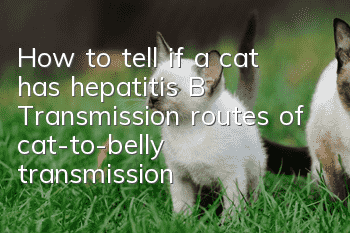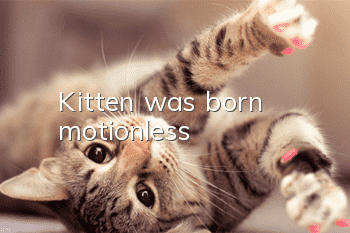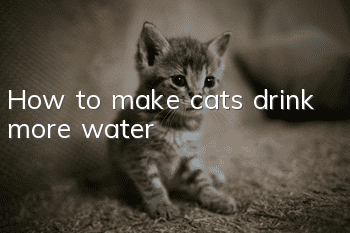How to tell if a cat has hepatitis B? Transmission routes of cat-to-belly transmission

If a cat is found to have cold-like symptoms, such as cough, diarrhea, loss of appetite, listlessness, weight loss, persistent fever, etc., it may be suspected that it is transmitted through the abdomen from cats, and it should be sent to a doctor for diagnosis as soon as possible. If the cat has cloudy eyes, pus accumulation, constricted pupils, and visual impairment, it may be in the middle stage of feline abdominal transmission.
How to tell if a cat has hepatitis B
If a cat is found to have cold-like symptoms, such as cough, diarrhea, loss of appetite, listlessness, weight loss, persistent fever, etc., it may be suspected that it is transmitted through the abdomen from cats, and it should be sent to a doctor for diagnosis as soon as possible. If the cat has cloudy eyes, pus accumulation, constricted pupils, visual impairment, or symptoms such as hind limb paralysis, trembling, anemia, etc., it may be in the middle stage of feline abdominal transmission. During the onset of wet abdominal transmission, there will be a large amount of accumulation in the chest and abdomen. High protein exudate, when there is a lot of fluid accumulation, the abdomen will swell, and you can feel the fluctuation of water by touching it with your hands; this symptom is usually transmitted to the abdomen in the wet type.
Is it contagious if a cat has abdominal transmission
Cat-to-cat transmission is not contagious to humans, but it can be contagious to other animals. Feline transmission is caused by infection with feline coronavirus, and the infection rate is very high. It is generally considered to be an infection through the mouth and nose. Cats that carry the virus will shed the virus in their feces, and the feces can infect cats who live together. A few are infected through food dishes, clothes, bedding, people or insects. Sharing cat litter, cat litter shovels, etc. may lead to infection. Generally speaking, the higher the density of cats, the higher the proportion of feline coronavirus infections. Feline coronavirus infection is particularly common in places where cats live in high-density groups, such as catteries, animal shelters, and multi-cat households.
- Which ointment is better for treating ringworm in cats?
- How to make a cat more obedient? Let it remember its name!
- What are the benefits of cats basking in the sun? Things to note when cats are basking in the sun
- Is it true that a cat can be trapped by drawing a circle on the ground?
- Pet owners should remember the symptoms and treatment of postpartum calcium deficiency in cats!
- Do you know the symptoms of cat rabies? How to treat cat rabies!
- How to keep a cat from destroying everything in the house and tame a well-disciplined cat?
- Why is the cat coughing and retching?
- How to rub a cat's belly to help defecate?
- What's going on with the rotten hole in the cat's belly?



